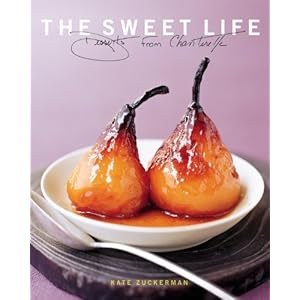Just a month ago, if you were to ask me to describe Hungarian food - or, even, anything about Hungarian culture - I would probably be dumbfounded to offer anything outside of "paprika" as my answer. And even with that, truthfully, I would mostly be reminded of the absolutely amazing Satoshi Kon film (RIP Satoshi Kon, BTW, the world lost one of the best there was.) Second to paprika, I would probably think "some sort of really smelly sausage", courtesy of the boyfriend's penchant for using it in the Brazilian delicacy feijoada. Finding the Hungarian deli in town was one of the best days of his life, no doubt, but to me...meh.
But then, as luck would have it, we got ourselves a new room mate. A Hungarian! From Hungary! He's a P.h.D. student in Hungarian history, which makes a nice, and hilarious, contrast to the M.Sc. I'm chugging along on. He isn't a huge fan of the indigenous Hungarian food as I would have assumed, but he came with all sorts of melodrama when I found this:
Yep..another dessert cookbook! From the library, too! I bet you're all dumbfounded by that complete surprise. This book has "Ira" written all over it, for 1) the recipes, and 2) the blatant and gorgeous use of Art Nouveau design, typography, and embellishments within. Love it!
I showed the book to my roomie, making sure to point out that "Budapest" was on the cover, and then instructed him to choose something that was within my capabilities to bake for us. This was my chance to bake something Hungarian, expanding my repertoire to a whole TWO items.
After some consideration, we decided on Rigo Jansci (REE-go YAHN-shi) (again, blogger fails in the accent department - there should be one on the i). This translates to "Johnny Blackbird" in Hungarian. Yes, I know. It's weird, but at least there's an explanation.
Like many European desserts, this one is named after a person. And not just any person! Johnny Blackbird was, apparently, a gypsy violinist. And not just any gypsy violonist, but the most attractive gypsy violinist ever.
The story goes that in the late 1800s, Johnny was playing violin at a hotel in Paris. Watching his performance was the (former) Klara Ward - a milliionaire's daughter, and wife of Baron Chimay. Upon seeing Johnny, Klara was so taken with his good looks that she went so far as to take off her wedding ring and place it on his pinky. Can you believe that! 200 years later, that's some racy shit! I mean, really! Taking off your wedding ring IN FRONT OF YOUR HUSBAND, and putting it on some RANDOM MUSICIAN'S FINGER?! My God...
Anyways, she left her husband and two kids (ach!), and joined Johnny on his travels. Then, some Hungarian pastry chef named a "sinfully" chocolate dessert after him. Surprise surprse, the marriage didn't last, and he faded into obscurity. But Rigo Jansci, the dessert, did not.
Rigo Jansci has everything a chocolate lover would...well, love. It's like a chocolate sandwhich: chocolate sponge cake is the bread, and the "meat" (or whatever) is chocolate whipped cream, spiked with a bit of rum. On top, there is a chocolate glaze to make everything pretty. Admittedly, though, this isn't the super mega heavy chocolate orgasm that I was thinking. Actually, the chocolate taste is a bit subdued. I guess this is more representative of what the European tortes are like - more of an emphasis on texture and flavour combinations than overwhelming, huge, heavy cakes that North Americans are accustomed to.
 |
| Photo: Ira Sherr |
And just to make sure things are going according to plan, I was able to double-check the appearance against an adorable watercolour from Cakespy.
 |
| Image: Cakespy |
Yep, things check out. Phew!
The dessert isn't too difficult to make, either. But be warned, these tortes (and their similar desserts) are an exercise in preparation and assembly. There are a number of different components to make, so take some time to plan (ie. don't start this at 9 PM). The other somewhat comforting thing about these kinds of desserts is that they are all based on sponge cakes, so they are somewhat healthier for you (right? right?), and take far less time to bake. One baking sheet of sponge was prepared in about 10, and bakes in 15 minutes, and that's all you need for this recipe.
Perhaps the biggest victory for my Rigo Jansci was that I managed to impress some people! Apparently the roomie's coworkers - who may or may not be from Hungary, but know of said dessert - tried some and were pleased with the results. Diplomacy win!
In light of that, do expect more central European desserts in the future. Especially because Kaffeehaus is a phenomenal body of baking work.




